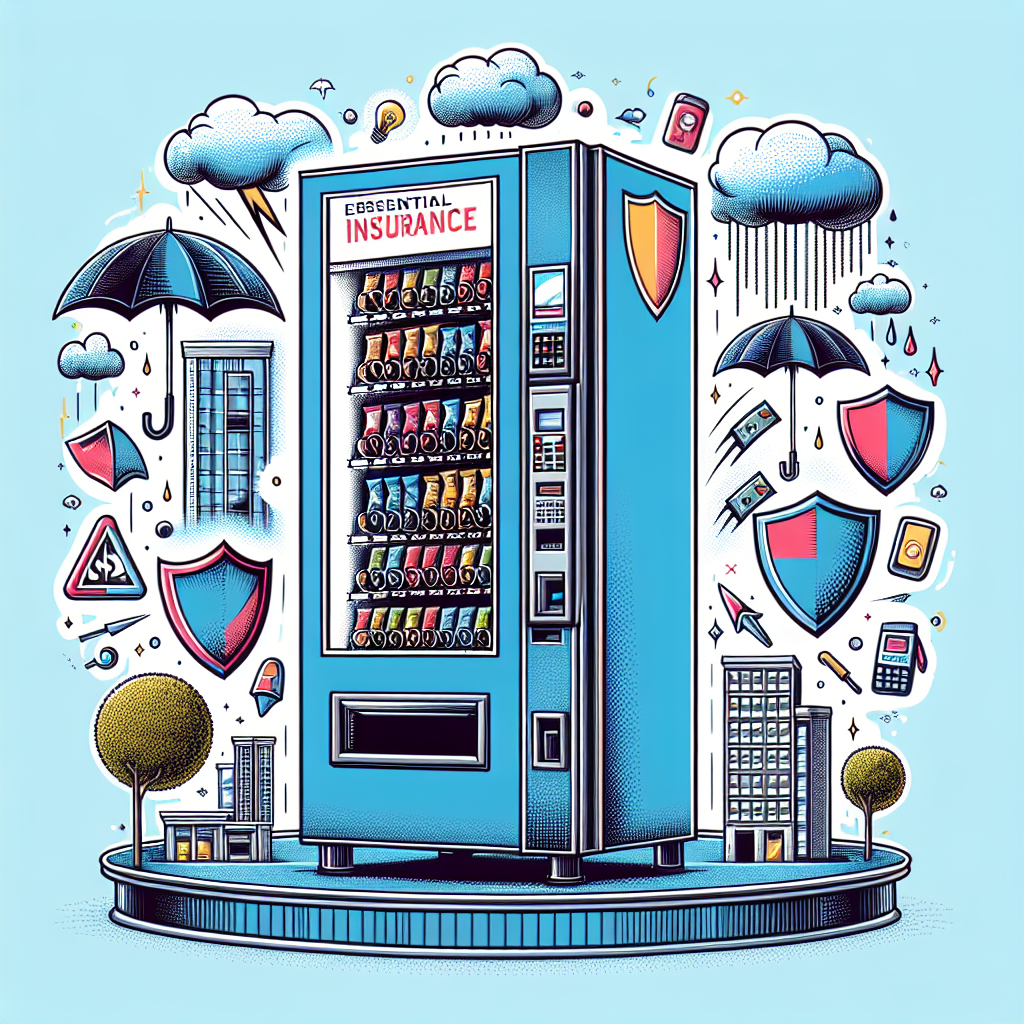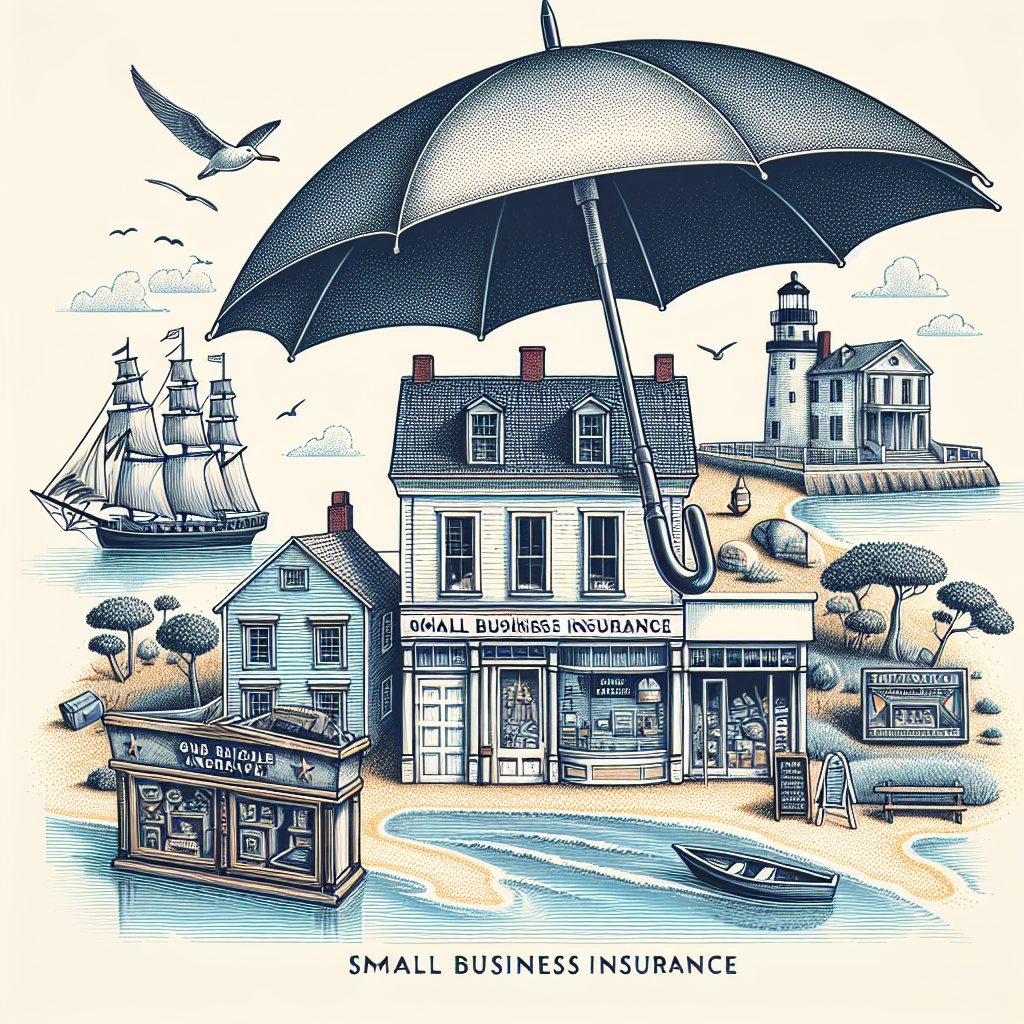Filed under Home Insurance on
FedEx Home Delivery Insurance Coverage Explained

A dropped box on the porch, a dented corner, a package that never arrives—none of these are rare experiences in modern ecommerce. Yet most shippers and recipients are unclear about what’s actually covered when something goes wrong. With FedEx Home Delivery, coverage hinges on a concept called “declared value,” not traditional insurance. If you’ve ever wondered exactly what that means, consider this your practical guide—FedEx Home Delivery Insurance Coverage Explained from end to end, with best practices that reduce risk and speed up claims when the unexpected happens.
What you’re really buying: declared value, not insurance
Here’s the plain-language version: FedEx does not sell “insurance” for most shipments in the strict legal sense. Instead, it offers “declared value,” which is a contractual limit of liability. You tell FedEx what your shipment is worth, and FedEx agrees to take on financial responsibility up to that amount if the package is lost or damaged, as long as all terms are met.
This distinction matters. Insurance is a regulated product with specific consumer protections and underwriting. Declared value is a carrier’s liability promise under its service guide. The coverage applies only if you comply with packaging rules, commodity restrictions, timelines, and documentation requirements. Keep that frame in mind as you read through FedEx Home Delivery Insurance Coverage Explained; it will help you make decisions that actually protect your business.
What is FedEx Home Delivery and when to use it
FedEx Home Delivery is a residential service under the FedEx Ground network. It delivers seven days a week in many areas, supports standard parcels and some oversize items, and integrates with options like signature requirements and Delivery Manager for recipients. It’s the workhorse for ecommerce shipments going to households.
Coverage under declared value for Home Delivery functions largely the same as other FedEx Ground services, but you’ll want to check any unique limits for the items you ship. If you sell fragile goods, high-value accessories, or perishable items, the details below will make or break a claim.
Declared value vs. “insurance”: what’s the real difference?
- Scope: Declared value is a ceiling for carrier liability—not a promise to reimburse any loss regardless of cause. Damage caused by inadequate packaging or restricted commodities can be excluded.
- Cost basis: Charges are typically assessed per $100 of declared value. Rates change periodically, so confirm current pricing in the FedEx Service Guide.
- Proof requirements: You’ll need documentation that shows the item’s actual market value: invoices, receipts, appraisals, or comparable sales records.
- Limits and exceptions: Certain commodities have strict caps or are excluded entirely. Jewelry, cash equivalents, and works of art have additional restrictions.
Third-party shipping insurance, by contrast, is an optional policy sold by an insurer or specialized marketplace provider. It may offer broader causes of loss, higher limits for specific commodities, and sometimes simpler claims, albeit with its own exclusions.
What’s covered—and what isn’t
Standard limits and default coverage
FedEx generally provides a small default liability (often up to a set amount without charge) unless you declare a higher value at booking. You can typically declare up to a much larger limit per shipment on FedEx Ground and Home Delivery, though you must pay for that higher liability and abide by packaging and commodity rules. Always confirm the current caps and charges; they can shift year to year.
Commodity restrictions and caps
FedEx’s service guide lists items with limited or no coverage. Common problem categories include:
- Fine jewelry, precious metals, and stones (caps usually apply, with special programs required for higher values)
- Cash, gift cards, negotiable instruments
- Artwork and collectibles with subjective valuation
- Antiques, one-of-a-kind items without clear market value
- Perishables and temperature-sensitive goods without approved cold-chain methods
If you routinely ship these items, consult the latest FedEx restrictions and consider a third-party insurance program tailored to your product category. As we continue with FedEx Home Delivery Insurance Coverage Explained, note how these restrictions intersect with documentation and packaging—two areas that can make or break a claim.
Packaging and labeling obligations
Coverage is contingent on following FedEx’s packaging standards. That means using a new or like-new corrugated box of appropriate strength, cushioning fragile items individually on all sides, and deploying the “H-tape” method to seal seams. Heavy or dense items often require double-wall boxes and interior bracing to prevent movement. Labels must be clear and unobstructed; if you reuse boxes, remove or black out old barcodes and addresses.
In short, if an inspector can attribute damage to inadequate packaging—too little cushioning, a crushed reused box, or exposed product—your claim can be denied even if you paid for higher declared value.
How declared value pricing works
FedEx charges for declared value in increments based on the total amount you declare above the default liability. The per-increment cost and any minimum charges can vary by service and change over time. Two tips keep costs aligned with risk:
- Declare actual value, not wishful value. Inflated numbers can trigger scrutiny and may not be paid if you can’t substantiate them.
- Use tiers. For low-risk, low-cost goods, default coverage might be sufficient. For fragile or theft-prone products, boost declared value or use third-party insurance.
Because rates evolve, don’t rely on outdated blog posts. Verify current fees in the FedEx Service Guide before building the cost into your pricing or checkout logic.
How to file a FedEx claim step by step
Let’s keep FedEx Home Delivery Insurance Coverage Explained practical with a walk-through of the claims process. While specifics can change, the general flow looks like this:
- Document immediately: Photograph the outer box, inner packaging, labels, and damage from multiple angles. Advise the recipient to keep everything until the claim is closed.
- Gather proof of value: Invoice, order confirmation, receipts, SKU cost sheets, or appraisals. If retail price differs from cost, have both ready and be prepared to justify the claimed amount.
- Start the claim online: Use the FedEx claims portal with the tracking number. Specify whether the claim is for loss, damage, or shortage.
- Provide contact details and pickup availability: FedEx may request to inspect or retrieve the item and packaging. Make it easy.
- Track and respond: Monitor your claim status. Respond promptly to requests for more information.
- Resolution and payment: If approved, payment typically goes to the shipper of record unless otherwise arranged.
Deadlines and timing
File fast. Carrier deadlines for damage can be short—often measured in weeks from delivery—while loss claims typically allow more time (commonly up to several months from ship date). International timelines may be even tighter. When in doubt, submit within days, not weeks, and confirm the current deadlines in the FedEx Service Guide for your lane.
Evidence checklist
- Tracking number and shipment date
- Full set of photos: outer box, inner dunnage, product damage
- Proof of value: invoice, receipt, appraisal, or comparable sales
- Serial numbers or IMEI for electronics
- Weights and dimensions, especially if the delivered package weighed less than expected
- Recipient statements describing the condition on delivery
Common reasons claims are denied
- Insufficient packaging or reused boxes that collapsed
- Commodity is excluded or exceeds caps
- Declared value not supported by documentation
- Deadlines missed or packaging discarded before inspection
- Evidence of tampering without a signature requirement for high-risk destinations
Third-party insurance: when it makes sense
Third-party shipping insurance can be a smart add-on in several scenarios:
- High-value items with FedEx caps (e.g., jewelry and fine watches)
- Products with subjective or fluctuating market values (art, collectibles)
- International shipments to regions with higher theft or loss rates
- Merchants needing streamlined claims across multiple carriers
These policies sometimes include broader causes of loss—like porch piracy post-delivery—though this varies by provider. Check the fine print, especially for unattended deliveries. As we continue with FedEx Home Delivery Insurance Coverage Explained, remember that third-party insurance can complement declared value rather than replace it; many merchants blend both based on product and destination.
Risk management for ecommerce merchants
Decide when to declare value vs. self-insure
Align coverage decisions with unit economics. For items under a certain price threshold, it may be cheaper to self-insure—absorbing the occasional loss rather than paying declared value fees each time. For mid- to high-value SKUs, declared value or third-party insurance can be justified by saved replacements and customer experience.
- Set internal thresholds by product category and destination risk.
- Automate rules in your shipping platform: declare value for fragile items, high theft ZIP codes, or any order above your threshold.
- Review loss data quarterly and adjust thresholds to match reality.
Packaging upgrades that pay for themselves
- Right-size boxes to cut void space and movement.
- Use double-wall corrugate for dense or heavy goods.
- Add corner protection, foam-in-place, or molded inserts for fragile items.
- Bag liquid containers, use leak-proof seals, and separate from other goods.
- Apply “H-tape” to all seams with pressure-sensitive shipping tape—not duct or masking tape.
Many claims hinge on packaging. Stronger boxes and better cushioning both reduce breakage and demonstrate due care if you need reimbursement.
Signature and delivery controls
- Signature options: Indirect, Direct, or Adult Signature can reduce theft and disputes for high-value orders.
- Hold at location: Sending packages to a staffed FedEx location or partner pick-up spot can prevent porch piracy in high-risk areas.
- Delivery Manager: Encourage recipients to use FedEx Delivery Manager for scheduling and instructions.
When discussing FedEx Home Delivery Insurance Coverage Explained with your team, consider these delivery controls part of your coverage strategy. They don’t change policy language, but they materially lower the chance you need a claim in the first place.
International and cross-border considerations
Cross-border shipments add variables: customs documentation, duties, prohibitions, and longer transit times. Declared value for carriage is separate from customs value, though they should be consistent with actual market value to avoid scrutiny. Commodity restrictions can tighten dramatically depending on origin and destination.
International claims often have shorter reporting windows and additional documentation requirements. Build a checklist for your warehouse team to ensure invoices, packing lists, and HS codes are accurate and accessible if a claim arises.
Real-world examples
Example 1: Fragile home decor
A homewares brand ships a $180 ceramic vase. The company uses a snug, double-wall box with 2+ inches of cushioning and declares value at $180. The box arrives with visible crush damage and the vase is cracked. Photos show strong packing and interior protection. Proof of value is clear. The claim is approved for the product value plus shipping according to policy.
Example 2: Consumer electronics
A retailer ships a $600 tablet to a city with a high theft rate. They add Direct Signature and declare value at $600. The recipient isn’t home and reschedules delivery; upon delivery, the package is intact but the tablet won’t power on. The claim hinges on whether damage happened in transit versus a product defect. The seller provides pre-shipment device test logs, serial number match, and unboxing photos from the customer. The carrier denies due to lack of transit damage evidence. The merchant re-evaluates by adding tamper-evident seals and device logging to bolster future claims.
Example 3: Jewelry shipment
A boutique sends a $3,500 necklace. FedEx’s caps for jewelry limit liability well below the item’s value. The merchant uses a third-party insurance policy designed for jewelry, adds Adult Signature, and ships with a nondescript box to avoid attention. The package arrives safely; if it hadn’t, the third-party policy would have filled the gap.
Benchmarks and industry context
Package volume and consumer expectations keep rising. Surveys from ecommerce platforms and last-mile trackers have documented steady increases in delivery speed expectations and concern about porch piracy. While exact figures vary by study, the directional trend is clear: more parcels on doorsteps equals more exposure to theft and accidental damage. Carriers have responded with expanded pickup networks, weekend residential delivery, and better visibility tools, but claims still occur.
For brands, the operational takeaway is to treat coverage as one part of a broader resilience strategy: invest in packaging, route high-risk orders to staffed pickup points, use signature capture for expensive items, and calibrate declared value or insurance based on data. That’s the heart of FedEx Home Delivery Insurance Coverage Explained from a merchant’s point of view—coverage plus prevention beats coverage alone.
Frequently asked questions
Is declared value the same as the item’s sale price?
Usually, but not always. Declare the true, supportable value. If you declare above the substantiated amount, the claim will be paid only up to actual value. If you declare below, that’s the maximum you can recover even if the item costs more.
Does declared value cover shipping costs?
Sometimes. Depending on the circumstances and policy language, reimbursement may include transportation and declared value charges for approved claims. Keep invoices handy to make the case.
What if the package is marked delivered but stolen?
Once delivered, carrier liability can be limited. Signature requirements, Hold at Location, and delivery instructions reduce this risk. Some third-party insurance policies offer post-delivery theft coverage—verify the terms before relying on it.
Can I declare value for items with policy caps?
You can often declare a value higher than the cap, but reimbursement will still be limited to the cap. For high-value restricted commodities, consider specialized programs or third-party insurance.
Do I need to keep the packaging after a claim?
Yes. Do not discard packaging or damaged items until the claim is closed. FedEx may request inspection or pickup, and disposing of materials prematurely can result in denial.
Compliance checklist you can use today
- Map your SKUs by risk: fragile, high-value, theft-prone, temperature-sensitive.
- Set declared value thresholds and signature rules by SKU and ZIP code risk.
- Upgrade packaging specs: double-wall for heavy/fragile items, molded inserts, and H-tape sealing.
- Create a claims kit: photo protocol, invoice templates, serial logs, and a packaging retention policy.
- Train support staff on timelines: file damage claims quickly and loss claims as soon as status stalls.
- Audit quarterly: loss frequency, claim approvals, and cost versus protection; adjust your strategy.
- Evaluate third-party insurance for capped commodities and international lanes.
Cost-control strategies without sacrificing protection
- Bundle value buckets: For orders under your loss tolerance, rely on default liability; for midrange, use declared value; for top-tier, add third-party insurance and signature.
- Engineer packaging: Small improvements in cushioning and box strength cut breakage rates—and claims.
- Use data-led routing: Hold at location for repeat theft ZIP codes and apartment complexes with access challenges.
- Communicate with customers: Delivery windows, alerts, and pickup options reduce unattended time on the porch.
This is the operational side of FedEx Home Delivery Insurance Coverage Explained—treat coverage as a lever, not a crutch. The cheapest claim is the one you never need to file.
Key takeaways
- Declared value is not traditional insurance; it’s a liability limit subject to strict rules.
- Packaging quality is just as important as the amount you declare.
- Commodity caps and exclusions matter: know them before you ship.
- File claims fast, keep all packaging, and document everything.
- Blend declared value, delivery controls, and third-party insurance based on product risk.
If there’s one line that sums up FedEx Home Delivery Insurance Coverage Explained, it’s this: coverage helps you recover, but process prevents losses. Calibrate your thresholds, invest in packaging, and use signatures and pickup options where they make sense. With those fundamentals in place, declared value becomes a precise tool instead of a fuzzy safety net.
A quick decision framework
- What is the item’s true, supportable value?
- What is its risk profile (fragile, theft-prone, restricted commodity)?
- What delivery controls will reduce exposure (signature, hold at location)?
- Does a policy cap limit potential recovery? If yes, consider third-party insurance.
- Is the order value above your self-insurance threshold? If yes, declare value or insure.
- Are packaging specs sufficient for the item’s fragility and weight? Upgrade if not.
Use this checklist at checkout or in your warehouse management flow to make consistent, defensible decisions.
Final word
The goal of this guide—FedEx Home Delivery Insurance Coverage Explained—has been to make an often-confusing topic practical. Determine the right mix of declared value, packaging standards, and delivery controls for each SKU and destination. For categories with tight carrier caps, pair declared value with a third-party insurer. And whatever you do, document everything. In a high-velocity shipping world, preparation is the most reliable form of protection.
For the most current specifics on limits, excluded commodities, and declared value rates, consult the latest FedEx Service Guide. With those details in hand and the strategies here, you’re set up to protect your shipments, your margins, and your customers’ trust—exactly what FedEx Home Delivery Insurance Coverage Explained is all about.




